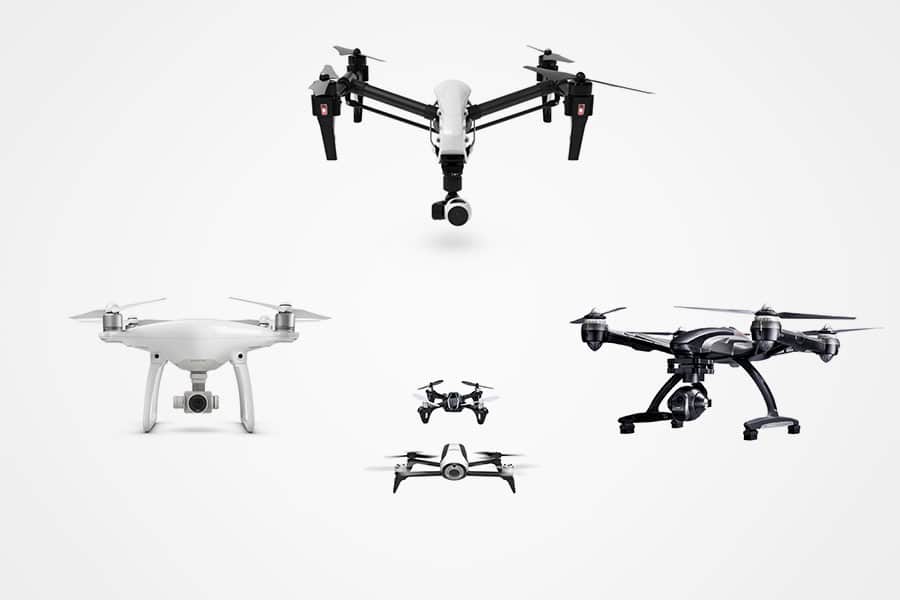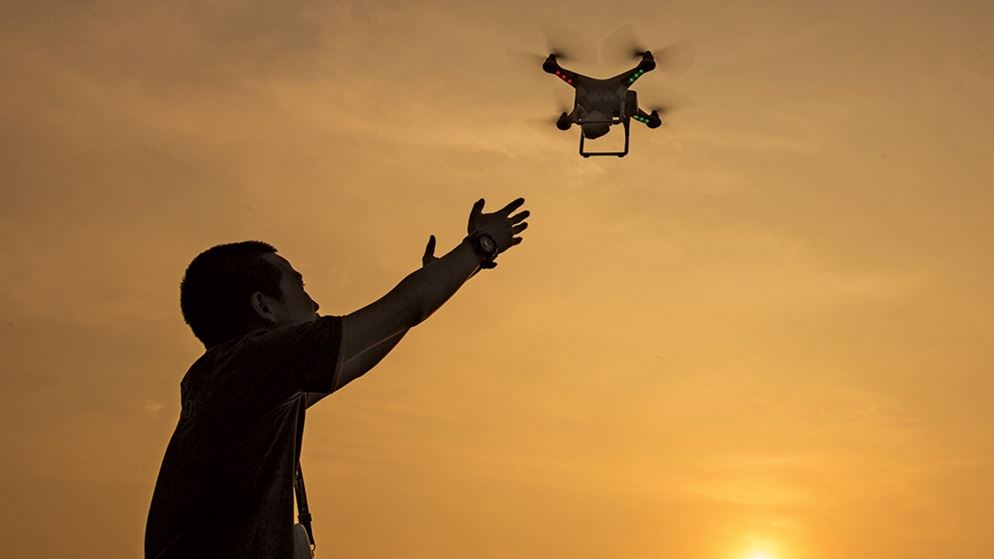

Amazon made headlines in 2013 by introducing its vision to use delivery drones to distribute its products throughout the world. The announcement and the PR campaign that followed brought a lot of excitement and fan fair. It captured the imagination of tech enthusiasts all over. Finally, something in our lifetime from The Jetsons. The future was here.
On the surface drones, or unmanned aircraft systems (UAS), seem innocent enough. But there’s more to this trend if you look closer. There’s a darker side. It turns out that drones fuel cutthroat corporate competition, have the potential to create traffic problems, and threaten our civil liberties.
Let’s start with Amazon. Amazon is part of a handful of tech companies New York Times writer, Farhad Manjoo, calls the Frightful Five — Amazon, Apple, Google, Microsoft, and Facebook. These are America’s largest corporations (by stock-market value), and they control all the major technological platforms that dominate life in the US. They’re also jockeying for supremacy in the drone industry.
Amazon CEO Jeff Bezos has dubbed his drone development program Prime Air. Recently, the U.S. Federal Aviation Administration (FAA) – the agency in charge of regulating U.S. airspace -- gave the company authorization to start testing its drone.

Facebook just finished a solar powered drone they’re calling Aquila, and they’re set to test it in the United Kingdom. Aquila is huge flier that has the wingspan of a Boeing 737 jetliner. It’s designed to circle the stratosphere of the globe to beam down Internet access to the most remote corners of the world using lasers.
Another example of the Frightful Five in action is Google’s Project Wing. Google has been developing its drones to compete with Amazon’s delivery service. However, it suffered a set back with a crash during a recent test run in New Mexico.
Although the five major conglomerates steal much of the headlines, many startups and other companies are managing to elbow their way into the fray.
An example, is Australian startup Flirtey. They partnered up with Virginia Tech and NASA to use a drone to fly medical supplies from an airfield to a remote area of Virginia.
Although the provisions weighted only 10 pounds and the flight was only a mile away, it was a breakthrough moment for drone technology and policy.
Additionally, CNN, PrecisionHawk and BNSF Railway teamed up with the FAA to create the Focus Area Pathfinder project, which among other things tests drones for newsgathering in urban areas. This initiative is controversial because these companies were granted waivers from the FAA to fly drones beyond the pilot's visual line of sight, which is usually prohibited.
The popularity of drones’ presents another obvious challenge -- traffic. There’s only so much room in the already crowed airspace over the US. Currently, most drones occupy the same part of the sky as crop dusters, recreational aircrafts, and helicopters. That’s everything below 500 feet. Just imagine integrating the thousands of new drones into the sky as the UAS industry expands.
Gur Kimchi, co-founder of Amazon's Prime Air, has suggested a solution. At NASA's the Unmanned Aerial Systems (UAS) Traffic Management Convention in August of 2015 he proposed that regulators reserve airspace for commercial drones between 200 and 400 feet.
Another obstacle is the size of most drones. The small dimensions of some drones make them hard to detect by air traffic management (ATM) systems. In 2015 NASA introduced a potential solution. Their ideas was to establish a UAS Traffic Management System (UTM) that would both track drone traffic and send operators alerts about routing, weather and restricted airspace.
Also PrecisionHawk developed its version of an air traffic system. Dubbed LATAS (Low Altitude Tracking and Avoidance System), it supplies flight planning, tracking and avoidance over 2G cellular networks.

Government and law enforcement agencies have started to use drones to solve and deter crime. Illinois state police have been flying drones to take photos at crime scenes and crash sites since May of 2015, for instance. But because some people see this as a threat to our civil liberties it's become a controversial issue.
Many legal experts believe the continued use of drones in police surveillance could raise issues around constitutional rights, especially as they relate to unreasonable search and seizure. Douglas Wood from the Reed Smith law firm in New York City edited a white paper on drone law entitled Crowded Skies.
Many concerned legislators are stepping up to protect the rights of citizens. Lawmakers across the country are proposing drone laws that relate to privacy and trespassing. In a more extreme instance, Oklahoma State Senator Ralph Shortey introduced a bill that would allow property owners to shoot down drones.
The drone industry is growing at a breakneck pace. The FAA predicts that drones will expand into a $90 billion industry over the next ten years. It’s practically inevitable that drones will be a large part of American life. However, it’s important to recognize the downsides along with the benefits.
The future is here.
